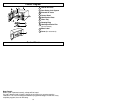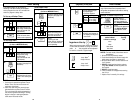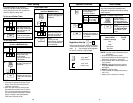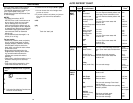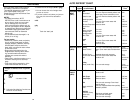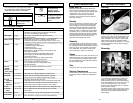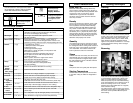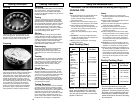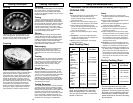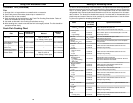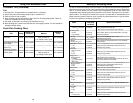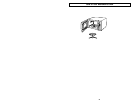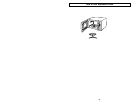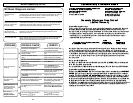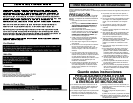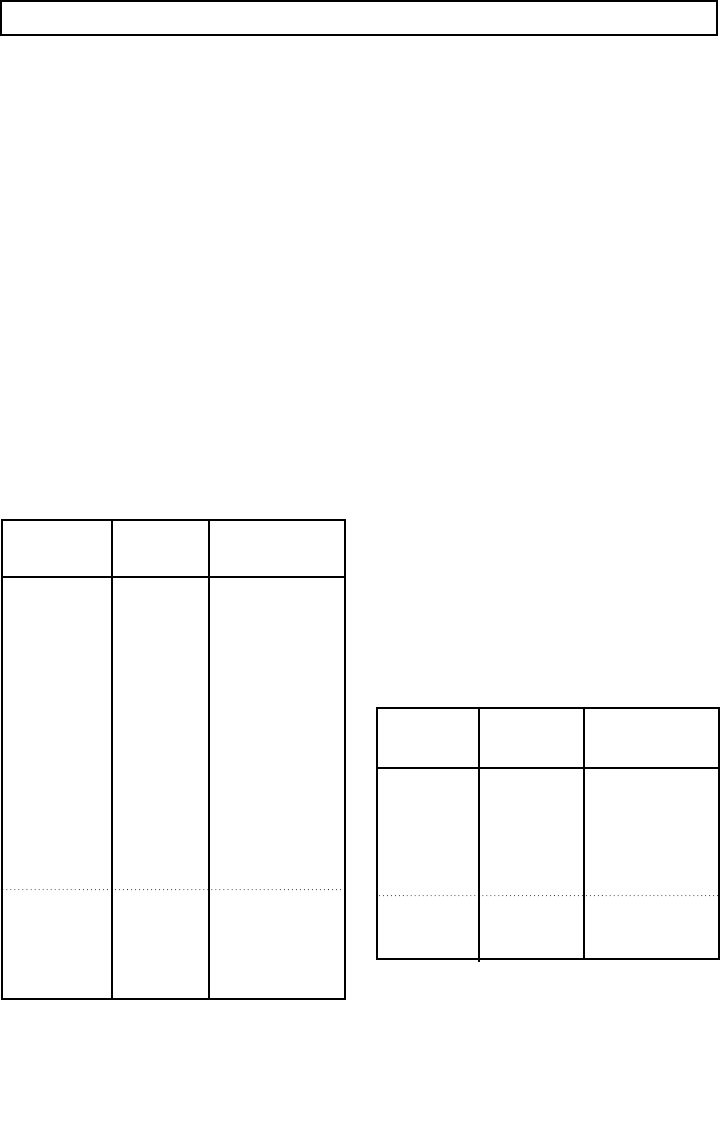
17
16
Meat
1. No special techniques are required. Meat should
be prepared as with conventional cooking.
Season if desired. Always thoroughly defrost
meat before cooking.
2. Place the meat on a microwave roasting rack or
microwave-proof plate and place on the turntable.
3. Cook according to the Meat Cooking Chart
(below). Use the longer time for large meats and
the shorter time for smaller meats. For thicker
chops, use the longer time.
4. Turn the meat once halfway through the cooking
time.
5. Let stand for 5-10 minutes wrapped in foil after
cooking. The standing time is very important as it
completes the cooking process.
6. Make sure meat, especially pork, is thoroughly
cooked before eating.
Poultry
1. No special techniques are required. Poultry
should be prepared as with conventional cooking.
Season if desired.
2. Poultry should be thoroughly defrosted. Remove
giblets and any metal clamps.
3. Prick the skin and brush lightly with vegetable oil
unless the poultry is self-basting.
4. All poultry should be placed on a microwave
roasting rack or a microwave-proof plate and
placed on the turntable.
5. Cook according to the instructions in the Poultry
Cooking Chart below. Turn over halfway through
the cooking time. Because of its shape, poultry
has a tendency to cook unevenly, especially in
very bony parts.Turning during roasting helps to
cook these areas evenly.
6. Let stand for 5-10 minutes wrapped in foil after
cooking before carving. The standing time is very
important, as it completes the cooking process.
7. Make sure poultry is thoroughly cooked before eat-
ing. Whole poultry is completely cooked when the
juices run clear from the inside thigh when it is
pierced with a sharp knife. Poultry pieces should
be pierced with a sharp knife through the thickest
part to ensure that the juices are clear and the
flesh is firm.
WARNING: Do not use aluminum foil during cooking cycle.
BEEF
Standing/Rolled
Rib
– Rare
– Medium
– Well-done
Ground Beef (to
brown for casse-
role)
Hamburgers,
Fresh or defrost-
ed
(4 oz. each)
– 2 patties
– 4 patties
PORK
Loin, Leg
Bacon
– 4 slices
– 6 slices
Microwave
Power
8
8
8
HIGH(100%)
HIGH(100%)
HIGH(100%)
8
HIGH(100%)
HIGH(100%)
Cooking Time
Per Pound
7 to 9 minutes
8 to10 minutes
9 to 12 minutes
5 to 7 minutes
1 to 3 minutes
2 to 4 minutes
9 to 14 minutes
2 to 4 minutes
3 to 5 minutes
Meat Cooking Chart
CHICKEN
Whole
Breast
(boned)
Portions
TURKEY
Whole
Microwave
Power
8
8
8
8
Cooking Time
Per Pound
6 to 9 minutes
5 to 7 minutes
5 to 7 minutes
6 to 9 minutes
Poultry Cooking Chart
NOTES:
• The times listed above are only a guide.
Allow for difference in individual tastes and
preferences. The times may also vary due to
the shape, cut, and composition of the food.
• If whole poultry is stuffed, the weight of the
stuffed bird should be used when calculating
the cooking time.
NOTE: The times listed above are only a
guide. Allow for difference in individual
tastes and preferences. The times may
also vary due to the shape, cut, and com-
position of the food.
Poultry
COOKING TIPS
Meat
Using Your Microwave Oven
Cooking Techniques Cooking Techniques
Shielding
Thin areas of meat and poultry cook more quickly
than meaty portions. To prevent overcooking,
these thin areas can be shielded with strips of
aluminum foil. Wooden toothpicks may be used to
hold the foil in place.
Timing
A range in cooking time is given in each recipe.
The time range compensates for the uncontrol-
lable differences in food shapes, starting temper-
ature and regional preferences. Always cook food
for the minimum cooking time given in a recipe
and check for doneness. If the food is under-
cooked, continue cooking. It is easier to add time
to an undercooked product. Once the food is
overcooked, nothing can be done.
Stirring
Stirring is usually necessary during microwave
cooking. We have noted when stirring is helpful,
using the words once, twice, frequently or occa-
sionally to describe the amount of stirring neces-
sary. Always bring the cooked outside edges
toward the center and the less cooked center por-
tions toward the outside of the dish.
Rearranging
Rearrange small items such as chicken pieces,
shrimp, hamburger patties or pork chops.
Rearrange pieces from the edge to the center
and pieces from the center to the edge of the
dish.
Turning
It is not possible to stir some foods to redistribute
the heat. At times, microwave energy will concen-
trate in one area of a food. To help insure even
cooking, these foods need to be turned. Turn
over large foods, such as roasts or turkeys,
halfway through cooking.
Stand Time
Most foods will continue to cook by conduction
after the microwave oven is turned off. In meat
cookery, the internal temperature will rise 5°F to
15°F (3°C to 8°C), if allowed to stand, tented with
foil, for 10 to 15 minutes. Casseroles and
vegetables need a shorter amount of standing
time, but this standing time is necessary to allow
foods to complete cooking to the center without
overcooking on the edges.
Testing Doneness
The same tests for doneness used in convention-
al cooking may be used for microwave cooking.
Meat is done when fork-tender or splits at fibers.
Chicken is done when juices are clear yellow and
drumstick moves freely. Fish is done when it
flakes and is opaque. Cake is done when a tooth-
pick or cake tester is inserted and comes out
clean. Candy is done when it reaches the proper
temperature for each stage of crystallization.
Spacing
Individual foods, such as baked potatoes, cup-
cakes and appetizers, will cook more evenly if
placed in the oven equal distances apart. When
possible, arrange foods in a circular pattern.
Covering
As with conventional cooking, moisture evapo-
rates during microwave cooking. Casserole lids or
plastic wrap are used for a tighter seal. When
using plastic wrap, vent the plastic wrap by fold-
ing back part of the plastic wrap from the edge of
the dish to allow steam to escape. Loosen or
remove plastic wrap as recipe directs for stand
time. When removing plastic wrap covers, as well
as any glass lids, be careful to remove them
away from you to avoid steam burns. Various
degrees of moisture retention are also obtained
by using wax paper or paper towels. However,
unless specified, a recipe is cooked covered.



